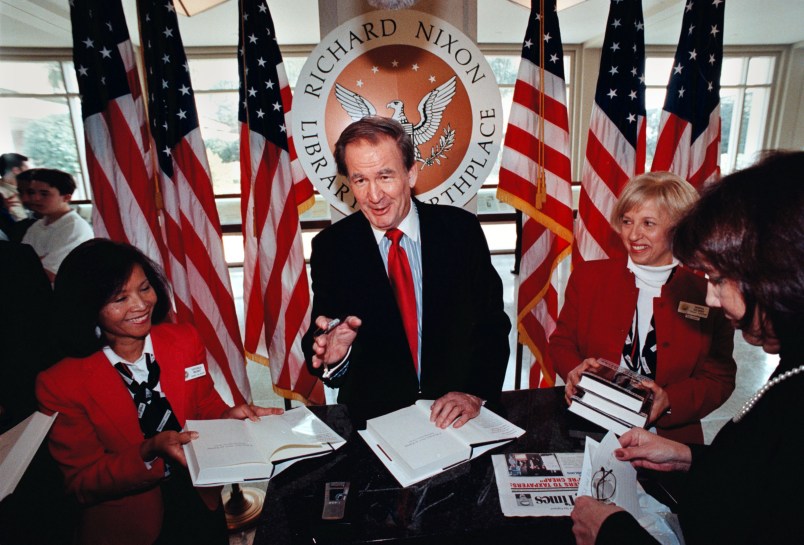The Nixon reelection campaign was in the news last week because of this article this article by Never Trump Republican Charlie Sykes. He offers a warning to Democrats that in 1971 Democrats thought they had Nixon on the ropes only to see George McGovern lose to him in a devastating electoral landslide in 1972. As it happens, the history is off. Nixon was doing reasonably well in 1971 and was actually pretty popular in 1972. But the story of the Nixon presidency has notable parallels and contrasts to today that are worth revisiting.
In 1971 Pat Buchanan, then a young aide and speechwriter for Nixon, wrote a memo for Nixon and his top advisors in which he argued that Nixon should “cut the Democratic Party and the country in half; my view is that we would have far the larger half.”
The story of the next couple decades of American politics and certainly of the early 1970s is that Buchanan was right. Nixon’s strategy was about polarizing the country, heightening the contradictions and inflaming divisions – around the war, around race, crime and the drug culture. Nixon’s half was bigger. Watergate upended that, but only briefly. Democrats had a massive wave in 1974 and the stain of Watergate allowed Jimmy Carter to eke out a narrow victory against the never-elected Jerry Ford. But post-Nixon Republicans came back with modest but key pick ups in the 1978 midterm and Ronald Reagan was elected along with a GOP Senate in 1980, in an election which defined American politics until the first years of this century.
The logic of the Trump presidency is also to continually divide the country, to maximize polarization. The difference is that Trump’s half is clearly the smaller half. This isn’t wishful thinking. It was true even in his improbable 2016 victory and even more so in the 2018 midterm. Looked at from a different, more demographic perspective, if you look at George McGovern’s losing coalition in 1972 – educated white voters and white professionals, young voters and minority voters – it’s fairly similar to the Obama coalition of 2008/12 and Democrats in 2018. It’s just that those groups are much larger in 2018 than they were in 1972. The key is that in our current political moment – especially in the Senate, but also in the electoral college and the House – the smaller half can monopolize political power.
People speculate about Trump somehow playing 12 dimensional chess, sending up a new flare to distract attention from this or that bad story, rushing ahead with self-destructive gambits which somehow must actually amount to counterintuitive genius moves. I doubt any of this is really true. The whole logic of Trumpism is to light the Trumpian base on fire and keep it boiling while doing everything possible to demoralize, exhaust and gaslight the opposition, psych everyone out, whip up spoiler third party candidacies and more.
The reality, though, is that the anti-Trump part is bigger and significantly so. The real question of the 2020 election is whether – either by their own internal haggling or because of Trump’s demoralization and search for third party spoilers – that anti-Trump part sticks together and maintains its focus. We’ve already seen how Trump can claim victory with a minority of support. There are good reasons to think the margin of popular vote defeat he can weather while winning the electoral college is even greater than it was in 2016 (because of activation of new voters in already blue states). But in this sense, the outcome is really in Democrats’ hands. They have the bigger part of a divided America, enough to overcome the locked in advantages of a Republican candidate, if they hold together.






